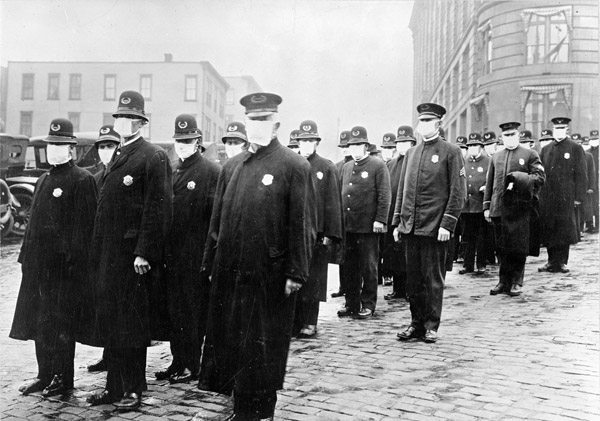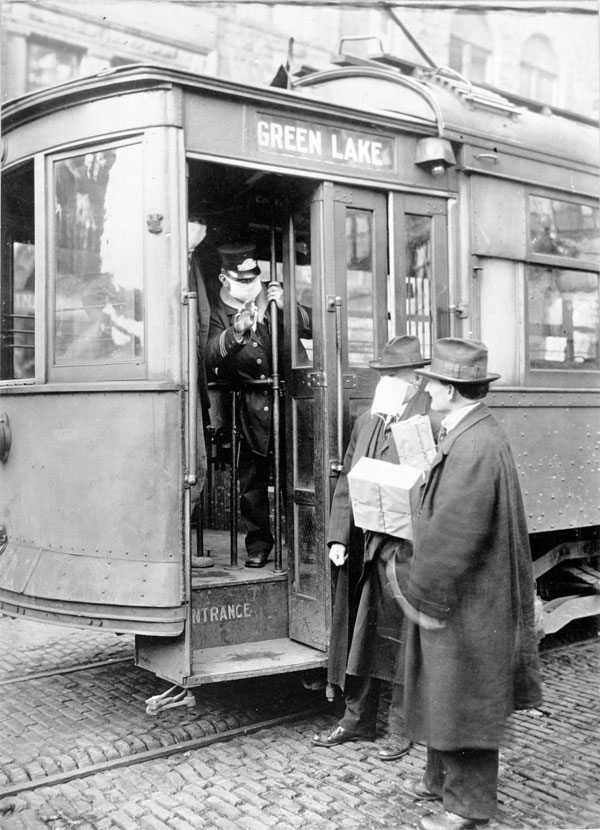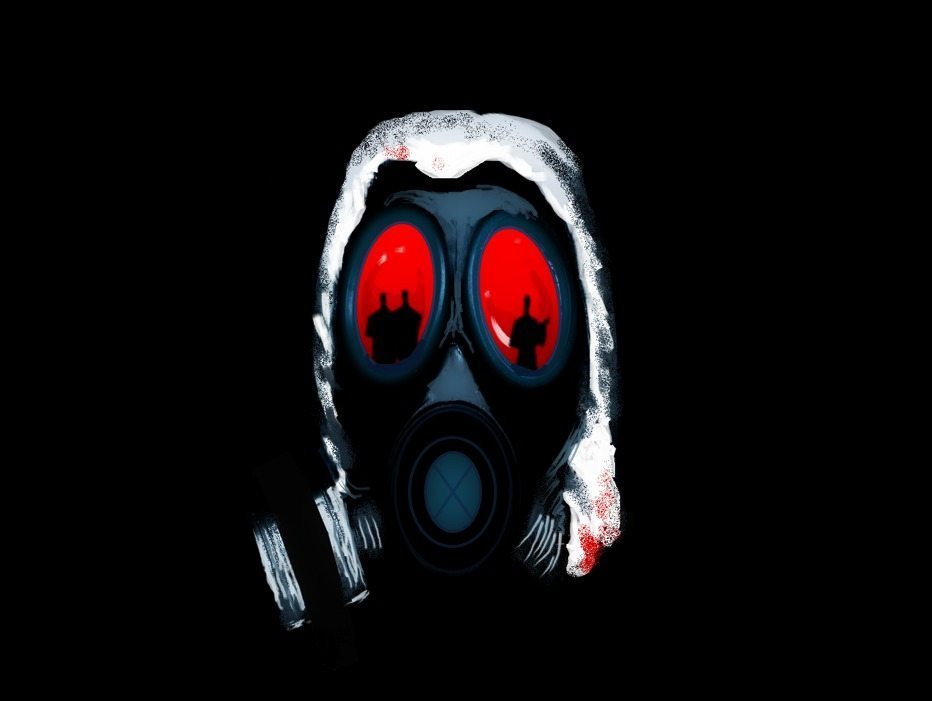What is the seasonal flu? Sounds really basic doesn’t it? We deal with it every year and never really think twice about it.
Yet, more people were killed by the influenza pandemic of 1918-1919 than the Great War (WW1). The estimate was put between 20-40 million people. It was known as the Spanish Flu and more people died of influenza in one year than all four-years of the Black Death (although high population and mass density was a contributor to the higher numbers).

President Woodrow Wilson suffered from it as well during the treaty of Versailles to end the World War. Government authority was strong enough that people accepted its authority and the implementation of restrictive measures. Funerals were limited to 15 minutes, signed certificates were required by towns in order to enter, and steep fines were given to those who ignored the ordinances. Not only were populations short of health care providers and care, but they were short of coffins, gravediggers and morticians.
Today, the science that put the antiseptic measures in place to fight the flu has largely kept the flu at bay, and reduced the severity of it, by a good marketing campaign. Populations are far more educated in the United States and are able to take measures to reduce the flue effects through rest, hydration and isolation.
Starting in September you start to see the posters stating to get your flu shot, of course we think about it and only a few of us actually get it. When you compare it to Ebola it doesn’t sound as scary but trust me this is our true concern. The seasonal “Influenza (flu) is a contagious respiratory illness caused by influenza viruses. It can cause mild to severe illness. Serious outcomes of flu infection can result in hospitalization or death. Some people, such as older people, young children, and people with certain health conditions, are at high risk for serious flu complications.
Some medical professionals believe the best way to prevent the flu is by getting vaccinated each year.” Seasonal Influenza: Flu Basics. To make matters even worse “There are two main types of influenza (flu) virus: Types A and B. The influenza A and B viruses that routinely spread in people (human influenza viruses) are responsible for seasonal flu epidemics each year. Influenza A viruses can be broken down into sub-types depending on the genes that make up the surface proteins. Over the course of a flu season, different types (A & B) and subtypes (influenza A) of influenza circulate and cause illness.”
What this basically means is that the virus (both types A and B) change over the season. They mutate and are on the constant attack! It’s amazing to me that we survive as a species every year. I would hate to be on the constant defense in a firefight but that’s what our bodies are doing every flu season. It’s truly amazing to me. Also we cannot forget the H1N1 flu virus also known as the swine flu and the Avian aka bird flu (remember that one?)

The flu virus is a real killer. So much so that “flu-associated deaths ranged from a low of about 3,000 to a high of about 49,000 people.” (Estimating Seasonal Influenza-Associated Deaths in the United States: CDC Study Confirms Variability of Flu.) Just inside the United States.
As we can see from the table above the maximum number of deaths from Ebola (not taking into account the current outbreak) is 280. That’s a far cry from the 3,000 minimum from the seasonal flu. What this means to me is that my risk of getting the seasonal flu and potentially dying from it or getting severely ill is far greater than getting the Ebola virus. With this information I would personally focus on preparing for the flu season and learning how to survive it before I started to worry about surviving an Ebola outbreak, especially since there has never been an Ebola outbreak in the United States.
The flu is easily transmitted “People with flu can spread it to others up to about 6 feet away. Most experts think that flu viruses are spread mainly by droplets made when people with flu cough, sneeze or talk.”
The flu is transmitted a lot easier than the Ebola virus which makes it a more serious concern. The flu is also a very contagious virus. “Most healthy adults may be able to infect other people beginning 1 day before symptoms develop and up to 5 to 7 days after becoming sick. Children may pass the virus for longer than 7 days. Symptoms start 1 to 4 days after the virus enters the body.”
Since the flu can be easily transmitted we should learn the symptoms that way we can recognize it if someone or ourselves have the flu. People with the flu display the following symptoms:
- “Fever* or feeling feverish/chills
- Cough
- Sore throat
- Runny or stuffy nose
- Muscle or body aches
- Headaches
- Fatigue (tiredness)
- Some people may have vomiting and diarrhea, though this is more common in children than adults.
- It’s important to note that not everyone with flu will have a fever.”
Well wait a minute…A lot of those are the same symptoms of the Ebola virus. Maybe we should break out our bio suits and air filtration units. Luckily there is no need to do any of that. A lot of virus symptoms have the same basic symptoms. This is why they are all in the virus family. This is also why, if you feel like you have a virus, you need to seek a medical professional for a true diagnosis. What we are trying to do here is be prepared and hopefully prevent getting these viruses to ensure that we are healthy and surviving together.
How can we prevent getting the seasonal flu? As we have discussed it’s a pretty nasty virus that kills way more people than the Ebola virus and it’s about to take center stage world-wide as we approach flu season. The following can help prevent the flu and protect others:
■ Try to avoid close contact with sick people.
■ If you are sick with flu-like illness, CDC recommends that you stay home for at least 24 hours after your fever is gone except to get medical care or for other necessities. Your fever should be gone without the use of a fever- reducing medicine.
■ While sick, limit contact with others as much as possible to keep from infecting them.
■ Cover your nose and mouth with a tissue when you cough or sneeze. Throw the tissue in the trash after you use it.
■ Wash your hands often with soap and water. If soap and water are not available, use an alcohol-based hand rub.
■ Clean and disinfect surfaces and objects that maybe contaminated with germs like the flu. Basically we need to have good hygiene and have the area where we live clean, much like preventing the Ebola virus.
- Avoid touching your eyes, nose and mouth. Germs spread this way.
Now that we know the symptoms and how serious the flu is and how to prevent it we must look to see ways to treat ourselves and others if we get the flu. First you need to drink plenty of fluids. You can also take medication for fever and pain relief such as Advil and Motrin. If your flu gets really bad you may need to take oseltamivir aka Tamiflu or zanamivir aka Releza. These are the two antiviral drugs approved by the FDA. The good news is that there is medication and treatment available to individuals that contract the flu but there is no medication that can directly combat Ebola.
It’s time for the fun what if scenario. You are a survivalist and for some reason (Apocalypse etc) you do not have access to medication or the flu vaccine and you or someone else has the flu. What can you do to treat it? Well luckily I’ve found some ways that might help you out. I have not tried these and I do not recommend trying them unless you are in dire need. You can use the following to help the symptoms out (take note that I said symptoms. These methods do not attack the virus directly like an antiviral.) Gargle salt to break up the mucus, blow your nose often and use steam from water to help open your air ways by taking a towel and draping it over your head as you breath in the steam, Get plenty of rest, use a warm cloth on your forehead to relieve pain, suck on ice chips if possible and drink soup. Please note that if any of these signs exist seek out a medical professional immediately.
“In children
- Fast breathing or trouble breathing
- Bluish skin color
- Not drinking enough fluids
- Not waking up or not interacting
- Being so irritable that the child does not want to be held
- Flu-like symptoms improve but then return with fever and worse cough
- Fever with a rash
In addition to the signs above, get medical help right away for any infant who has any of these signs:
- Being unable to eat
- Has trouble breathing
- Has no tears when crying
- Significantly fewer wet diapers than normal
In adults
- Difficulty breathing or shortness of breath
- Pain or pressure in the chest or abdomen
- Sudden dizziness
- Confusion
- Severe or persistent vomiting
- Flu-like symptoms that improve but then return with fever and worse cough” The Flu: What to Do if You Get Sick.
In conclusion the seasonal flu is far more dangerous than the Ebola virus. As somebody that prepares for the worse when I now think of virus protection I am thinking about the flu. I’m thinking about ways to prevent getting it and treating it if needed. Preparing for flu season is really beneficial. It is a great way to test your strategies out (since it happens every year), plus you can add things to your kit’s that help treat flu symptoms and these items can help you with a multiple of other things. One parting thing I want to leave you with is a flu survival kit that I found.
Flu Survival Kit:
Fever and pain relievers
Cough syrups and drops
Nasal sprays
Decongestants
Thermometer
Drink fluids
Use tissues
Resources to help you with the flu:
http://www.cdc.gov/flu/takingcare.htm
http://www.cdc.gov/flu/pdf/freeresources/updated/fluandyou_upright.pdf
http://www.cdc.gov/flu/pdf/freeresources/updated/treating_flu.pdf
http://www.webmd.com/cold-and-flu/features/flu-survival-kit
http://www.webmd.com/cold-and-flu/12-tips-prevent-colds-flu-1


